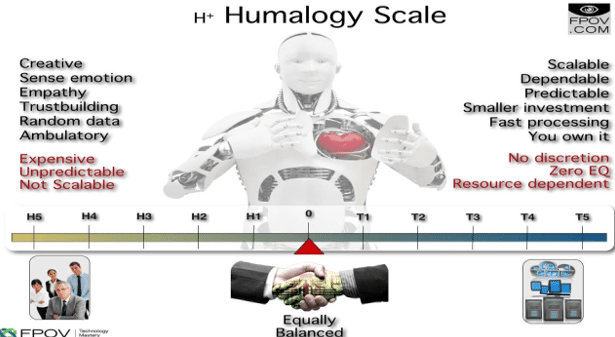Thursday, March 13, 2025

Most conversations around the use of Artificial Intelligence in the event industry are around use cases that improve workforce productivity and performance for repeatable processes. Here are three other approaches.
Tech strategy firm Future Point of View (FPOV) recently released its Humalogy® Trends Report 2024, which includes responses from thousands of leaders across many industries, and provides strategic insight for digital transformation. One of the key findings in the report is that more than nine out of 10 leaders believe the future of their industry will be
very different to radically different over the next decade because of AI tools. This means that conference organizers who can help attendees lead the transformation for their own organizations will be highly valued.
3 Ways for Planners to Strategically Incorporate AI
1. Focus on business growth and differentiation
According to the FPOV report, 74 percent of the respondents say their stakeholders expect them to modernize, but only 70 percent have a digital strategy roadmap in place.
Conference application — Incorporate AI strategy as a main room and/or leadership track. Look for speakers with business growth expertise first who can apply AI as an accelerator, not self-proclaimed AI gurus. Remember, leaders are expecting their industry to be
radically different. When measuring the ROI or developing the business case for a technology investment, revenue or customer growth always has a more significant impact than incremental efficiency or productivity gains.
2. Micro-learning productivity hacks
More than nine out of 10 of the FPOV respondents say they would increase the amount of technology they use to become more productive, yet three out of five say their organization does not offer AI training programs.
Conference application — Don’t create a standalone AI track. Instead, encourage presenters to weave it into their concurrent sessions — specifically how technology can help solve some of the issues they’ve identified during the session.
AI productivity use cases and hacks work well in a learning lounge or show floor theater environment. These sessions are best when they are 15 minutes in duration and are organized around topics that can be adopted by the individual, not necessarily the organization they work for.
Use the Humalogy Scale
According to FPOV, most organizations assess their current level of Humalogy at H3-H2 and believe they should be at T2-T3 in the next five years. The Humalogy scale provides a visual tool for identifying the optimum balance for human effort (H) and technology (T) for each business process.
 Conference application
Conference application — Identify your repeatable conference business processes. Include customer touch points like registration, abstract submission, speaker management, customer service, or exhibit sales. Use the Humalogy scale to assess the current mix of human effort vs. technology.
Enlist your technology solution provider/s for advice and help with the ROI assumptions, and for further automating the processes that will move the needle the most.
Risks and Ethics
The vast majority — 94 percent — of the FPOV respondents have some concerns about managing AI risks. Nearly one-third believe that federal or state government should be responsible for assuring the safe use of emerging technology and AI in the workplace and economy. (Pretty scary, right?)
While AI governance is a huge issue and should be taken seriously, we can’t make it an obstacle to exploring potential growth opportunities and developing our digital strategy. It may not pay to be on the bleeding-edge of this transformation, but being a fast follower could pay big dividends.
